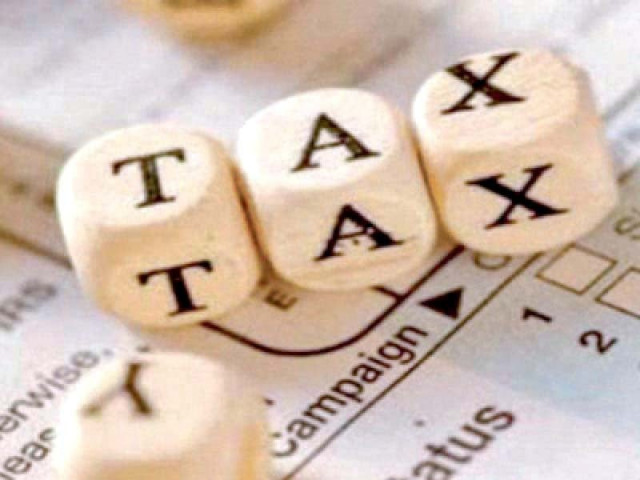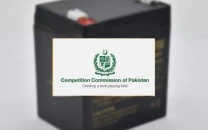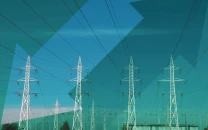How to reduce people’s misery in energy sector
GST can be done away with or at least reduced as energy tariff becomes unaffordable

It does not require any elaboration that people are suffering from high inflation, especially in the energy sector. There are both supply and pricing issues.
It is also known that heavy currency devaluation and international commodity crisis in the context of Ukraine conflict have, in large part, contributed to these problems. The problems are becoming unbearable, although the government’s pricing policies have tried to save the poor from the brunt of energy price inflation.
In the process, middle classes are suffering and falling into the ranks of the poor. The tragedy is that more is yet to come. Policymakers and administrators are at a loss as to what to do?
There are a number of long-term solutions that have often been discussed, but in this piece, we will try to look for some steps, which may help reduce the misery of the people.
Governments’ hands are tied under an IMF agreement. Cost has to be recovered in full from consumers, although cross-subsidy has been allowed. But there is a limit to how much load can be transferred to the richer consumer categories.
Latest electricity bills reveal that high-end consumers have to pay Rs60 per unit. In general, electricity prices have been doubled and gas prices will follow accordingly.
The problem with electricity and gas tariffs is that there are a lot of overheads, which go up in proportion to the increase in basic price. Some overheads such as fuel surcharge are necessary and are part of the basic tariff, but there are other charges as well, which could be reduced partly or wholly.
General sales tax (GST) is charged on electricity and gas tariffs at a rate of 17.5%. GST is levied on most items but many sectors are able to evade it and not much is collected from them.
It is an indirect tax which has a regressive effect on the economy. But it has been considered useful for documentation of the economy. We will restrict ourselves here to the GST effect on energy tariff.
GST adds a lot of overheads to electricity and gas bills as the 17.5% rate is a large multiplier or adder. In all of the Asean region, which includes the most progressive and fast developing economies, the GST rate is 10% or even lower. These countries include Vietnam, Thailand, Malaysia and Indonesia.
Even developed countries like South Korea, Australia and Japan have 10% GST rate. China has 13% GST. Why should Pakistan ape Western Europe and the US in charging a high GST rate of 17.5%.
There may be arguments in favour of keeping a high GST, most obvious being the collectability and the need to collect taxes and revenue.
Under IMF dictates, energy tariff should reflect the cost of supplies so that circular debt is controlled. However, the IMF does not bind on GST. It does require the government to collect legitimate taxes from those who escape either under rules or outside of the rules.
GST can be done away with from the energy sector or at least reduced. We are passing through an emergency. People are crying. High unaffordable tariff will increase theft and will increase receivables as well.
There are indications that it has started happening already. Theft is gaining a new legitimacy under the circumstances. There should be a search for balance and optimum point.
A GST rate of 5-10% on energy may alleviate some burden from the people. GST reduction may be for all consumer categories or at least be applicable to the low-income groups. Perhaps, the IMF will be amenable to this proposal. It should be persuaded.
Surcharges
Late payment surcharges are also excessive at 10%. If one delays payment of electricity bill by one day, he is liable to pay 10% of the billed amount. It is not as bad in the gas sector.
Why has electricity sellers been provided such a largesse over and above the losses that consumers have to pay. In the current hard economic circumstances, the issue has become even more painful.
Nepra, in a recent hearing, did take stock of the issue. It is not known what concessions have been worked out. The government should reduce it consistent with interest rates which even now are 2% per month or slightly more. The late payment charge may be reduced to 2% for first month and higher for later delays.
There is access problem as well which affects pricing and the quality of life. While electricity is available to 70% of people, gas is hardly available to 25-30%.
Consequently, there is often political pressure to expand gas network where it is uneconomic to expand. Consequently, average cost of supply increases.
Biogas has been largely ignored by policymakers, while piped gas resources have been going down. Biogas is used worldwide even in developed countries. Global market sales stand at $75 billion.
Liquefied petroleum gas (LPG) prices are also increasing. Rural poor often use LPG. Biogas is a mid-price resource. It is produced from liquid and solid waste, which is abundantly available, especially in rural areas.
Biogas generators are available these days in a packaged form made of plastic cylinders. An ordinary plumber can make one unit in a few hours using the material available in hardware shops. It may cost under Rs20,000 per unit.
There is no fuel cost involved. Animal and household vegetable and food waste can be fed into biogas producing appliances.
An added advantage is that tree cutting would be reduced. Also small farmers can get free fertiliser, which is produced as a byproduct. The government may consider subsidising and popularising biogas.
More important is the marketing and distribution network and awareness campaigns through electronic and social media.
Also biomass stoves costing a few thousand rupees (Rs2,500-5,000) can make life easy and comfortable for womenfolk.
These are smokeless stoves, which can burn slightly processed biomass, which can be done manually or by machines. Here again there are financing, marketing and awareness issues.
These two or three solutions are feasible in a short time frame, which is the purpose of writing this piece. The government should consider GST elimination or reduction in the energy sector carefully and without losing much time along with other proposals. Something is better than nothing.
The writer is former member energy of the Planning Commission and author of several books on the energy sector
Published in The Express Tribune, August 28th, 2023.
Like Business on Facebook, follow @TribuneBiz on Twitter to stay informed and join in the conversation.



















COMMENTS
Comments are moderated and generally will be posted if they are on-topic and not abusive.
For more information, please see our Comments FAQ